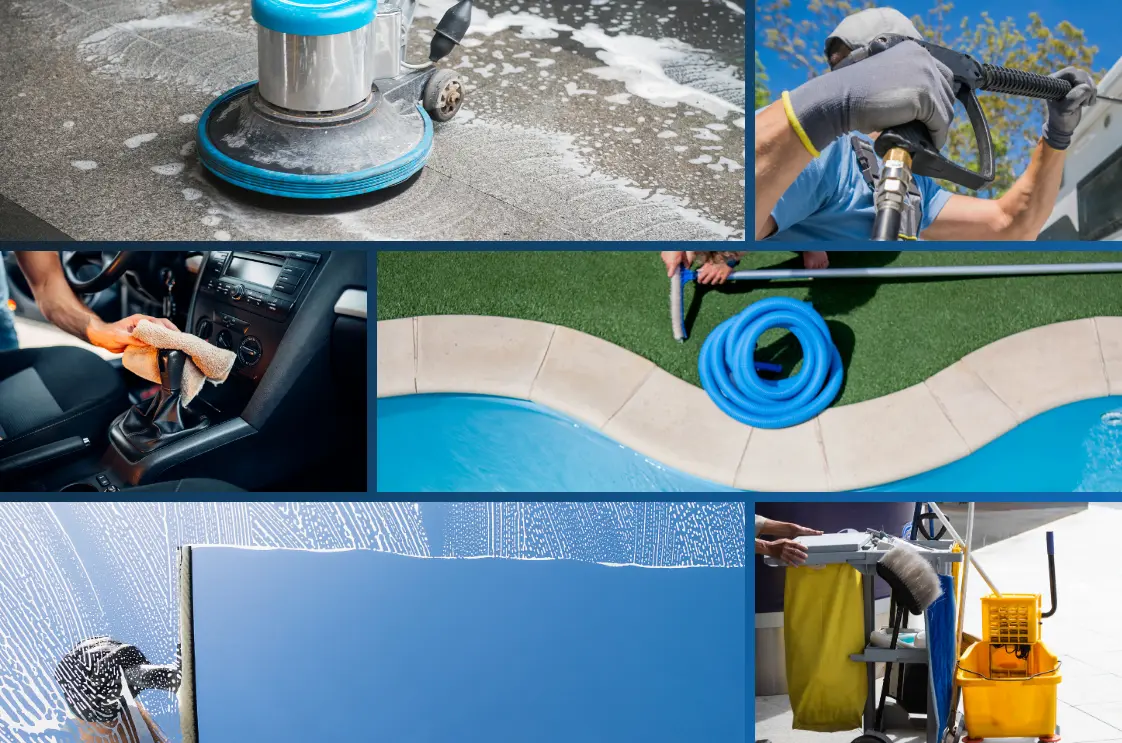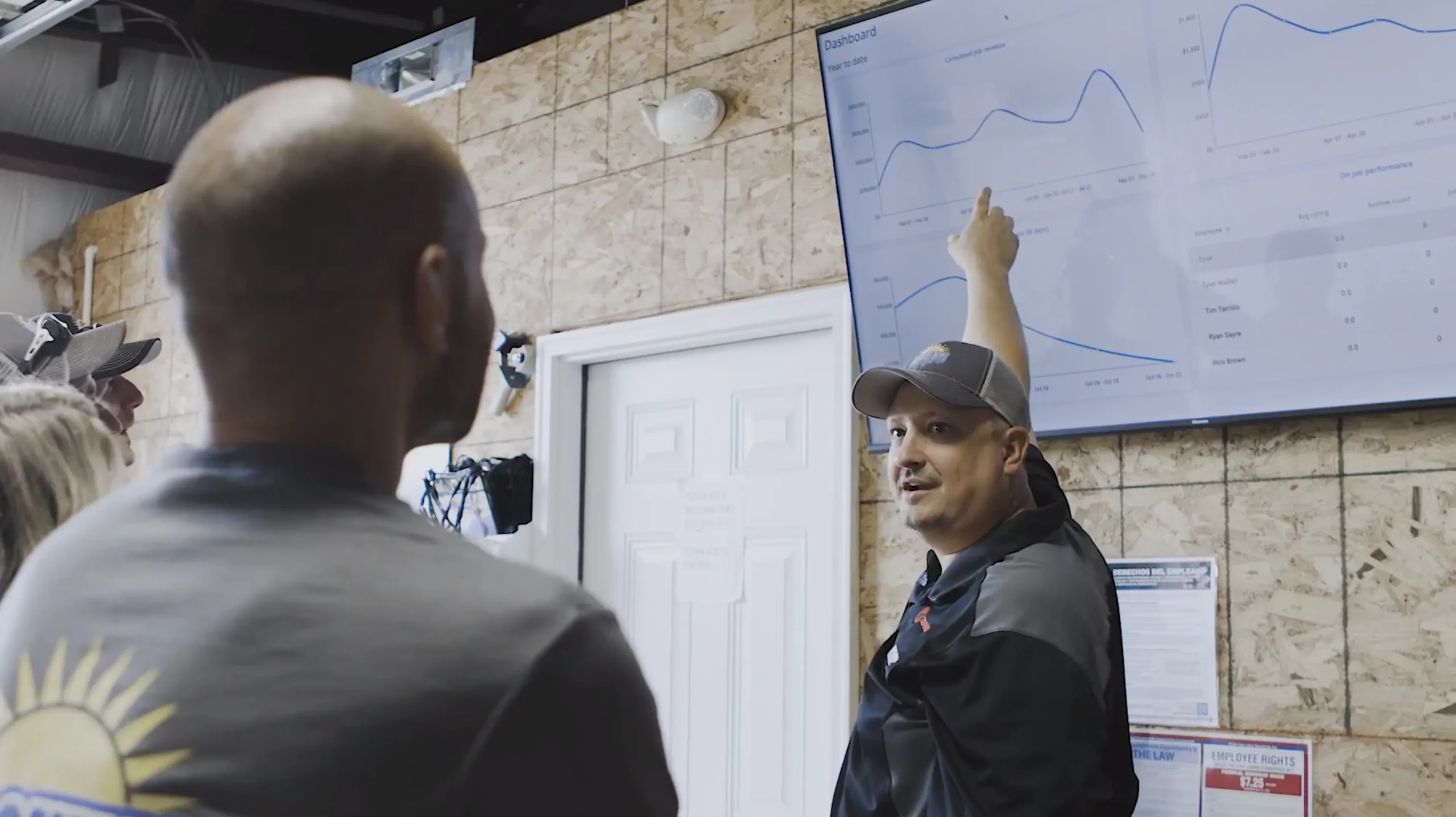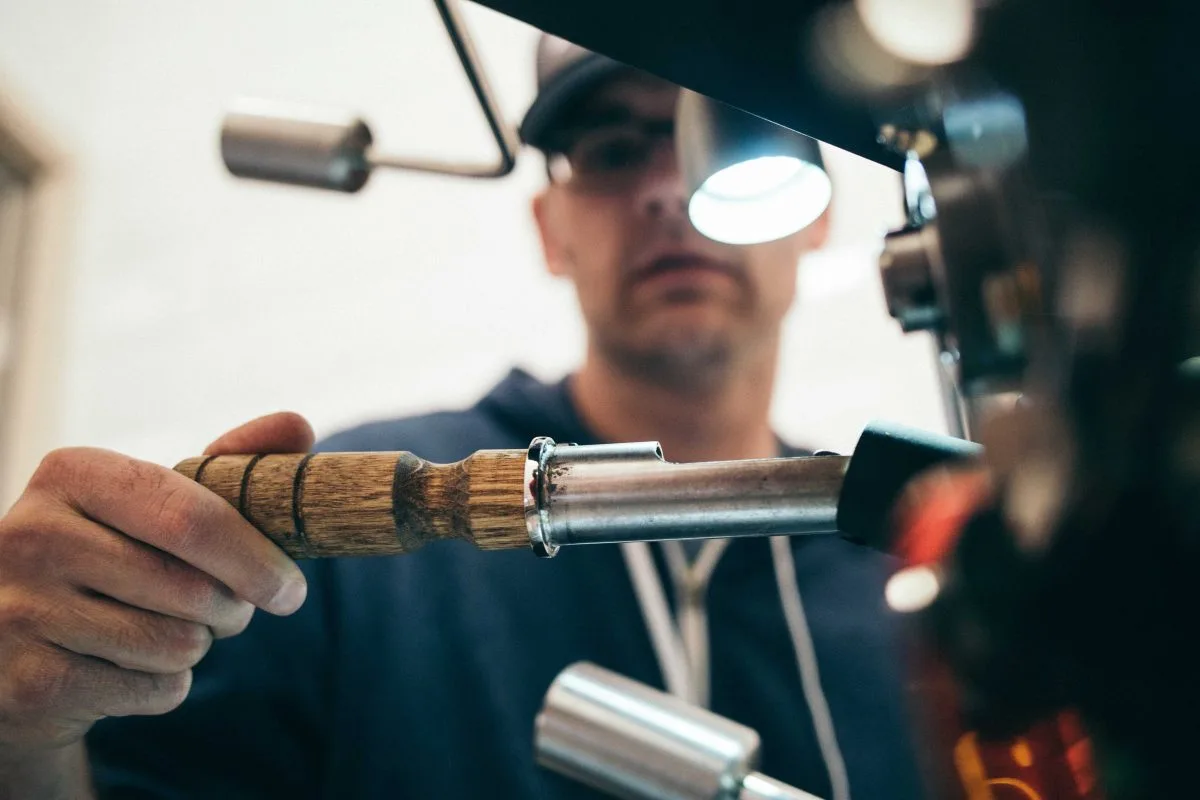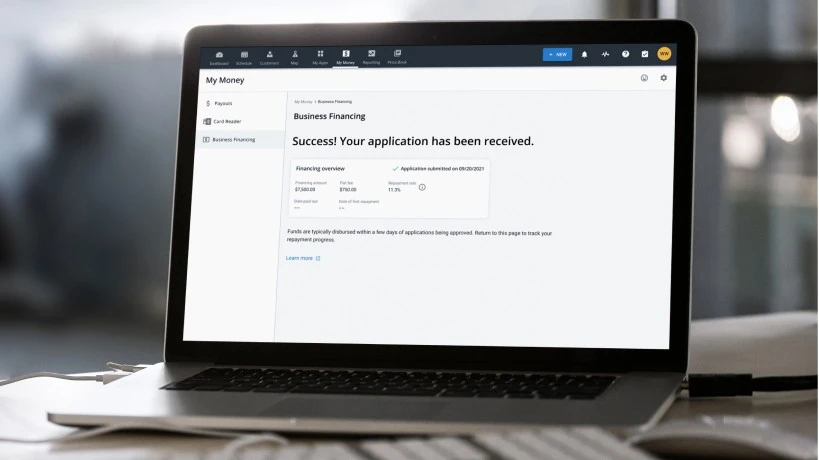
Cleaning services have become increasingly popular in recent years. This has created an avenue for many small home and commercial service business startups. Whether you are looking for a full-time career or you are just looking to make some extra money on the side, cleaning services are something to consider. Let’s take a look at some ideas to get you started.
51 Profit-Boosting Cleaning Services to Expand Your Business Offerings
1. Residential Cleaning
Residential cleaning involves tidying and sanitizing homes. This is the kind of service you receive when you hire a general house cleaner. They remove dust, dirt, and grime from surfaces in the home, like floors, countertops, and bathrooms.
Proper cleaning techniques and products are crucial to this service. Depending on your setup, you may have to provide appropriate cleaning solutions and tools like microfiber cloths and vacuum cleaners.
Some homes request full cleanings while others only need help in certain areas. Residential cleaning is useful for homeowners who don’t have the necessary time or physical capabilities to do the job themselves.
2. Commercial Cleaning
Commercial cleaning services large, commercial spaces like offices, schools, and stores. It requires specialized equipment and techniques to handle larger areas and high-traffic zones.
Most commercial spaces hire dedicated janitors to do this job after business hours end. Commercial cleaning can be a low-stress and rewarding business venture.
3. Pressure Washing
Pressure washing utilizes high-pressure water spray to remove dirt and grime from outdoor surfaces like driveways and decks efficiently. It’s effective for cleaning large areas and preventing surface damage, but proper pressure and technique are crucial so as to not damage the objects you are tasked with cleaning.
4. Window Cleaning
Window cleaning is a professional service that specializes specifically in windows. These can be windows on residential homes or they can be commercial buildings. Regular window cleaning maximizes natural light and enhances the overall aesthetic of a building or home.
Window cleaning does require the use of ladders and you should be physically fit to do this job. Most window cleaners report that they enjoy working outdoors and have a typically low-stress work environment.
5. Carpet Cleaning
Carpet cleaning is essential for maintaining both the appearance and hygiene of carpets. It utilizes various methods, including: vacuuming, steam cleaning, dry cleaning, and shampooing. Carpet cleaning can actually improve indoor air quality in the home by removing the buildup of dirt and dander that gets trapped in carpeting.
Carpet cleaning can be a profitable venture but you will need specialized equipment to do it. This is something to consider when thinking about startup costs.
6. Deep Cleaning
Deep cleaning comprehensively sanitizes every corner of a space, reaching areas often overlooked. It’s done less frequently, typically annually, to ensure cleanliness and hygiene. This involves scrubbing and disinfecting surfaces, including commonly missed areas like baseboards and vents. Carpets and upholstery are also deep cleaned to remove embedded dirt and allergens. Deep cleaning services can be offered along with general residential or commercial cleaning.
7. Spring Cleaning
Spring cleaning often refers to both a thorough cleaning and organizing of a space. It includes decluttering, deep cleaning, and refreshing the home. This tradition helps create a more organized and peaceful environment, promoting well-being. Tasks like dusting, vacuuming, and rearranging furniture are common. Many general residential cleaners offer specials for spring cleaning to boost business.
8. Office Cleaning
Office cleaning is a type of commercial cleaning that maintains a clean and sanitary workplace environment for office employees. It typically includes tasks like dusting, vacuuming, sanitizing restrooms, and cleaning high-touch areas. Depending on your location and clientele, you may be able to specialize solely in commercial office cleaning.
9. Chimney Sweeping
Chimney sweeping removes soot and debris from chimneys, ensuring safe and efficient operation. It involves using specialized tools to clean the chimney flue thoroughly. Regular chimney sweeping prevents chimney fires and promotes proper airflow, reducing the risk of carbon monoxide poisoning. This is an essential task for homes and buildings with fireplaces and one that most people cannot do themselves.
10. Move-in Cleaning
Move-in cleaning prepares a new home for occupancy, ensuring it’s fresh and hygienic. Tasks include dusting, vacuuming, cleaning floors, and sanitizing surfaces. Move-in cleaning is often a type of deep cleaning that creates a positive atmosphere and promotes better health and hygiene for new occupants. Most landlords and realtors outsource this type of cleaning to professionals.
11. Move-out Cleaning
Move-out cleaning ensures a rental property is left clean and habitable for the next tenant. It involves thorough cleaning of all areas, including floors, surfaces, appliances, and bathrooms. Move-out cleaning is typically the responsibility of the previous tenants. In many cases, they choose to hire professionals to ensure a spotless result, avoiding penalties and deductions from their security deposit.
12. Post-Construction Cleaning
Post-construction cleaning removes dust and debris from construction or renovation projects, ensuring a clean and safe environment. Post-construction cleaning is another type of deep cleaning, especially when sheetrock dust is involved. Post-construction cleaning promotes better indoor air quality and reduces the risk of respiratory issues caused by sheetrock dust and drywall in the home.
13. Upholstery Cleaning
Upholstery cleaning removes dirt, stains, and odors from furniture, enhancing its appearance and longevity. Like carpeting, upholstery can trap a buildup of dirt and dander. This dirt is released into the air every time someone touches or moves the furniture. Regular upholstery cleaning promotes better indoor air quality and prolongs furniture lifespan.
14. Green Cleaning
Green cleaning uses environmentally friendly practices and products to minimize environmental impact. Green cleaning can be applied to a number of the cleaning services mentioned in this article. In this case, “green” simply means using natural ingredients and reusable cleaning tools. Green cleaning promotes sustainability and improves indoor air quality while reducing exposure to harmful chemicals.
You can apply green practices to whatever cleaning service you choose to specialize in.
15. Janitorial Cleaning
Janitorial cleaning maintains cleanliness and hygiene in commercial spaces. Many businesses employ dedicated janitors, including schools, offices, libraries, medical facilities, and museums. It includes daily tasks like sweeping, mopping, dusting, and cleaning up any messes created by patrons of the space. Many commercial spaces have high-traffic areas where dirty footprints and garbage get left behind.
16. Duct Cleaning
Duct cleaning removes the buildup of dust, bacteria, mold, and other contaminants from air ducts in buildings and homes, improving indoor air quality and promoting better health. Technicians use specialized tools like high-powered vacuums and brushes to dislodge and extract contaminants.
It is important to note that duct cleaning has been associated with several scams perpetrated by unqualified service providers. Proper duct cleaning requires service providers to go through special equipment and training to successfully remove contaminants for customers.
17. Airbnb Cleaning
Airbnb cleaning prepares accommodations for new guests after a party has checked out after their stay. Airbnb cleaners complete tasks like changing bed linens, cleaning bathrooms and kitchens, and restocking supplies. Bedding is stripped and washed, surfaces are thoroughly cleaned and disinfected, and supplies are replenished. This meticulous cleaning process ensures a welcoming and comfortable environment for guests, fostering positive reviews and guest satisfaction.
18. Gutter Cleaning
Gutter cleaning removes debris like leaves and twigs to prevent clogs and ensure proper water drainage, thus protecting buildings from water damage. This job requires the use of ladders and you should be physically fit if you are planning to start cleaning gutters. Regular cleaning, ideally in spring and fall, preserves gutter systems and prevents structural issues caused by overflow.
19. Window Treatment Cleaning
Window treatment cleaning maintains curtains, drapes, blinds, and shades by removing dust and allergens, enhancing indoor air quality and aesthetics. Specific cleaning methods vary by material, such as washing curtains or dusting blinds. Regular cleaning preserves privacy, light control, and the visual appeal of window treatments. Often this is combined with other cleaning types, such as upholstery cleaning and residential cleaning.
20. Leather Cleaning
Leather cleaning removes dirt and stains while preserving the material’s appearance and longevity. Dirt and dust can get embedded in leather and require leather-specific cleaners and conditioners that restore softness and flexibility. Regular cleaning and conditioning prevent cracking, fading, and drying, ensuring leather surfaces remain beautiful for years.
21. Dry Cleaning
Dry cleaning uses solvents to clean clothes without water, ideal for delicate fabrics and stubborn stains. Garments are inspected, pretreated, and washed in solvent machines before being dried, pressed, and finished. Dry cleaning preserves fabric quality and appearance, extending the lifespan of clothing items. This is a common service and necessary for many types of clothing.
22. Hoarder Cleaning
Hoarder cleaning is an intricate process that involves assessing, planning, and organizing living spaces affected by hoarding disorders. Teams address clutter, clean surfaces, and provide emotional support to individuals. The process aims to create safe, functional environments, promoting well-being and quality of life for those affected. In hoarding situations, mental health professionals often work alongside cleaners.
Certain hoarding situations can require the removal of biowaste and hazardous materials. Cleaners should have received training to deal with such materials and maintain proper PPE to remain safe while on the job.
23. Junk Removal
Junk removal entails disposing of unwanted items from homes, offices, or construction sites. Professionals handle heavy lifting and disposal processes, ensuring environmentally responsible waste management. Recycling, donation, and proper disposal minimize environmental impact and promote sustainable waste practices. This job requires a work vehicle that can transport large objects, like broken furniture, TVs, cabinets, and metal waste.
24. Pool Cleaning
Pool cleaning involves keeping pool water chemically balanced, and free from debris and contaminants to maintain a clean, hygienic swimming environment. Skimming, brushing, vacuuming, and filter maintenance are essential steps in this job. Some pools have automatic cleaners to maintain some level of cleanliness, but it is still necessary to have a pool cleaner come in and do a full cleaning of the area. Regular cleaning enhances water circulation, prevents bacterial growth, and prolongs the pool’s lifespan.
25. Hazmat Cleanup
Hazmat cleanup involves safely removing and disposing of hazardous materials to protect human health and the environment. Trained professionals contain, isolate, and remove hazardous substances using specialized equipment and techniques. Effective cleanup minimizes risks of accidents, injuries, and pollution.
Hazmat cleanup cannot be done by home and business owners. This type of cleaning must be outsourced to trained professionals.
26. Car Cleaning
Car cleaning, or detailing, maintains exterior and interior cleanliness, preventing damage and preserving comfort. Washing, vacuuming, and interior surface cleaning to remove dirt and debris. Regular cleaning protects the car’s appearance and ensures a pleasant driving experience.
Car detailing services often have a physical location for customers to drop off their vehicles while you work on them. They also utilize professional cleaning equipment to reach places a regular shop vac would miss if the customer were cleaning the car themselves.
27. Boat Cleaning
Boat cleaning removes dirt, grime, and contaminants from exterior and interior surfaces to prevent damage and corrosion. Rinse, scrub, and dry methods are used, with attention to specific cleaning products for boats. Bottom cleaning is often necessary for boats that spend the summer in the water.
Small boat cleaning companies will go to local marinas to clean customer boats. These companies tend to provide all cleaning materials and tools required.
28. Foreclosure Cleaning
Foreclosure cleaning restores foreclosed properties to marketable condition for sale or rental. Trash removal, cleaning, and repairs are conducted to improve property appearance. This is often outsourced to professional cleaning companies as they save time and effort for the property owners, facilitating quick turnover and marketability.
29. Crime Scene Cleaning
Crime scene cleaning sanitizes and decontaminates areas affected by traumatic events, ensuring safety and cleanliness. Trained professionals remove biohazards and follow legal and ethical protocols. This is not a job for those with weak stomachs, but it does tend to be profitable. Compassionate service is necessary to support victims and families affected by tragedies.
30. Event Cleaning
Event cleaning maintains venue cleanliness and hygiene post-event, ensuring a welcoming environment for future events or regular operations. Trash removal, surface cleaning, and repairs are conducted efficiently. Professional cleaning services enable venues to host successful events and provide positive experiences for attendees.
31. Sanitization and Disinfection Services
Sanitization and disinfection services are crucial for preventing the spread of germs and viruses. Sanitization reduces the number of germs on surfaces to a safe level. This type of cleaning uses stronger chemicals and disinfection methods to kill germs, viruses, and bacteria.
These services are especially vital in high-risk areas like hospitals, schools, and commercial spaces to ensure the safety and well-being of individuals. These types of services became popular in other places, such as office spaces and stores after the COVID-19 pandemic.
32. Ceiling Cleaning
Ceiling cleaning is essential for maintaining clean, healthy environments in both residential and commercial settings. The process involves removing dirt, dust, cobwebs, and other debris from ceiling surfaces, enhancing the overall appearance of the space and improving air quality.
Special attention is given to areas near light fixtures, vents, and ceiling fans, and caution is taken when cleaning high ceilings to ensure safety. Regular ceiling cleaning helps prevent the buildup of dirt and dust, contributing to a cleaner and more comfortable environment. This is a popular service for large buildings, warehouses, and offices where regular janitorial services are inadequate for reaching ceiling spaces.
Get In Touch: 858-842-5746
Let us earn your trust
See plan options and feature breakdown on our pricing page.
33. Wall Cleaning and Repair
Wall cleaning is a simple yet crucial task for maintaining the cleanliness and appearance of a room. By removing dirt, dust, stains, and marks from walls, their original appearance is restored, enhancing the aesthetic appeal of the space.
Walls often must be cleaned before repair and painting. This is often done in both residential cleaning and deep cleaning services.
34. Construction Cleaning
Construction cleaning is essential for ensuring a safe and clean environment after a construction project is completed. This thorough cleaning process involves removing debris, dust, and residues left behind during construction activities.
This is often outsourced to a cleaning company once the initial project is done to remove sheetrock dust, wood shavings, and metal scraps that might have been left behind.
35. Bathroom Cleaning
Bathroom cleaning is vital for maintaining hygiene and preventing the spread of germs and bacteria. This essential task involves cleaning various surfaces and fixtures in the bathroom, such as toilets, sinks, countertops, bathtubs, and floors.
General residential and commercial cleaning often covers the bathrooms in those spaces.
36. Gym Cleaning
Gym cleaning is crucial for providing a safe and hygienic environment for gym-goers. This essential task involves a range of activities, including sweeping and mopping floors, wiping down equipment, disinfecting surfaces, and ensuring cleanliness in changing rooms and restrooms. Daily cleaning prevents the buildup of dirt, sweat, and bacteria, promoting a clean and healthy environment for gym members.
Like some of the other businesses mentioned, gyms tend to have dedicated janitorial services to provide cleaning in these areas.
37. Office Cleaning
Office cleaning is essential for maintaining cleanliness and tidiness in office spaces. Offices with large numbers of employees often have high-traffic areas that need to be cleaned and maintained daily. Office cleaning contributes to a healthy and productive work environment by eliminating dirt, dust, and germs, reducing the risk of illness, and promoting employee satisfaction and motivation.
Regular cleaning routines, including dusting, wiping surfaces, vacuuming or mopping floors, and ensuring proper ventilation, enhance the visual appeal of the workspace and improve overall productivity.
38. Floor Cleaning
Floor cleaning is often part of general cleaning services but care should be taken to use the right types of cleaners for the various flooring you may encounter. Linoleum floors may have to be stripped, cleaned, and resealed if they have excessive dirt stains. Wood floors need special wood cleaners and conditioners to maintain their integrity.
39. HVAC Coil Cleaning
HVAC coil cleaning is essential for maintaining the efficiency and performance of air conditioning systems. Over time, coils can accumulate dirt and debris, reducing their effectiveness at exchanging heat and leading to a reduction in airflow and potential damage to the unit. Coil cleaning on the outdoor unit can often be accomplished with water from a garden hose. However, if the indoor coil is dirty, a coil cleaner must be used.
This is a job best left to HVAC professionals. If you are just starting out in the HVAC trade, you should research how to safely handle coil cleaners so you don’t damage equipment, the environment, or yourself when using them.
40. Kitchen Cleaning
Kitchen cleaning is crucial for maintaining a safe and hygienic environment where food is prepared. This essential task involves cleaning various surfaces and appliances in the kitchen, including countertops, sinks, stoves, and refrigerators.
Proper cleaning techniques, such as washing with hot, soapy water and sanitizing with disinfectants, help remove dirt, grease, and bacteria, ensuring a clean and safe kitchen environment. When cleaning these spaces, food safety should be the priority.
41. Street Cleaning
Street cleaning maintains the cleanliness and usability of roads and public spaces. This crucial service removes debris, dirt, litter, and pollutants from streets, sidewalks, and gutters. Street cleaning helps prevent the accumulation of trash and contaminants, which can lead to various health and environmental issues. Specialized street sweeper vehicles equipped with brushes and vacuum systems are used to collect debris and waste.
42. School Cleaning
School cleaning maintains a clean and sanitary environment within educational institutions. Most schools have dedicated janitors who perform their cleaning tasks, such as dusting, sweeping, mopping, disinfecting surfaces, and emptying trash cans.
Schools are high-traffic environments and need to be cleaned daily. Regular cleaning helps eliminate germs, bacteria, and allergens, reducing the risk of illnesses and promoting overall well-being for both students and staff.
43. Church Cleaning
Church cleaning is often outsourced to a local cleaner or cleaning company. Church cleaning involves a range of tasks, including dusting, vacuuming, mopping, and sanitizing surfaces. Regular cleaning allows for a safe and calm space for church patrons to visit.
44. Car Washing
Car Washing most often refers to cleaning the exterior of a vehicle to remove dirt, grime, and other particles. Many car washes are automated but there are services available that wash cars by hand. Some of these services also provide interior cleaning, but not to the extent that car detailers provide.
Regular car washing is important to prevent damage from dirt, debris, and road salt.
45. Medical Cleaning
Medical cleaning is essential for preventing the spread of infections and maintaining a safe and hygienic environment in healthcare facilities. This specialized cleaning process involves the thorough cleaning and disinfection of all areas, including patient rooms, waiting areas, operating rooms, and common areas.
Medical cleaning requires the use of specialized equipment and disinfectants to kill bacteria, viruses, and other pathogens effectively. Regular cleaning protocols, along with strict adherence to infection control practices, are essential for maintaining a safe healthcare environment and preventing the transmission of infections among patients and healthcare workers.
46. Mold Remediation & Removal
Mold remediation and removal involves identifying, containing, and eliminating mold growth in buildings to prevent health risks. Initially, a thorough inspection determines the extent of the mold issue through visual assessments, air sampling, and moisture testing. Once confirmed, the affected areas are isolated to prevent spore spread, using measures like sealing and negative air pressure.
Specialized equipment and techniques are then employed to remove the mold and clean affected areas., This can include vacuuming, scrubbing, and using mold-specific cleaning agents. In severe cases, porous materials like drywall may require replacement.
Addressing underlying moisture issues, such as fixing leaks or improving ventilation, is crucial to prevent future mold growth.
47. Deck and Patio Cleaning
Deck and patio cleaning restores outdoor spaces by removing accumulated dirt, grime, and mold. The process begins with sweeping away loose debris to prevent surface damage during cleaning. Then, a suitable detergent or cleaning solution is applied to break down stubborn stains, followed by either scrubbing or power washing. Regular cleaning of these areas enhances aesthetic appeal, prolongs surface lifespan, and reduces slip hazards.
48. High-Rise Window Cleaning
High-rise window cleaning utilizes specialized equipment and techniques to professionally clean windows on tall buildings. Skilled professionals employ tools like scaffolding, bosun chairs, and cradle systems to access and clean windows at varying heights. This is not the job for you if you are afraid of heights.
Specialized cleaning solutions and techniques effectively remove dirt, dust, and grime, contributing to the building’s appearance and functionality. Window cleaners must adhere to strict safety regulations in this field.
49. Dryer Vent Cleaning
Dryer vent cleaning removes dryer lint and debris from clothes dryer exhaust ducts to improve efficiency and reduce the risk of fire hazards. After disconnecting the dryer, the vent system is inspected for blockages or damage. Cleaning tools like vent cleaning brushes or specialized vacuums are used to remove lint from the vent opening and the entire length of the vent.
50. Refrigerator and Freezer Cleaning
Refrigerator and freezer cleaning maintains appliance cleanliness and food hygiene. Removal of expired or spoiled food precedes the cleaning of removable parts with warm, soapy water or a vinegar solution. Interior surfaces are cleaned with a mild detergent, paying attention to corners and crevices, before wiping dry.
Exterior surfaces are similarly cleaned, including handles and rubber gaskets, ensuring the longevity of appliances and the safety of stored food.
51. Fire and Water Damage Cleaning and Restoration
Fire and water damage cleaning and restoration restore properties affected by disasters like fire or water leaks. The assessment determines salvageable items and necessary repairs, followed by debris, soot, or water removal using specialized equipment.
Cleaning involves removing smoke residue or disinfecting surfaces, while restoration may include repairing or replacing damaged structures. This comprehensive process ensures properties return to a livable and functional state that is up to code.
Tips for starting a cleaning business
There are a lot of options for cleaning services. Some require special training and tools while others have easier startup procedures.
Before you jump in, it is important to define your target market and niche. Determine whether you aim to provide residential or commercial cleaning services, or both. What kind of services will you offer? What is needed by the community in your area? By identifying your target customers, you can tailor your services and marketing approach accordingly.
It is a good idea to outline your goals, finances, and strategies for growth. A plan like this will act as a roadmap, guiding you through the initial stages and helping you stay focused on your objectives.
Check the local laws and regulations for the type of services you want to provide. Do you need a license? Do you need formal training? Research the specific legal requirements for cleaning businesses in your area and ensure that you comply with all regulations. Insurance is vital to protect your business against unexpected incidents or damages.
Will you be working alone or do you plan to hire employees for your business? If you need to find new hires, consider implementing a thorough screening process and background checks to ensure the safety and reliability of your team.
Invest in high-quality equipment and products. Efficient cleaning tools not only enhance the quality of your service but also save time and effort in the long run. Research different suppliers to find the most cost-effective options without compromising on quality.
Marketing and networking is going to be crucial to building a loyal clientele base. You may need to create a website, utilize social media platforms, or even distribute flyers. You might offer promotions or discounts to incentivize potential clients to try your services.
Lastly, make a point to prioritize exceptional customer service. Provide reliable and punctual service, ensuring that customers are satisfied with the results. Foster open communication and actively address any concerns or feedback to maintain positive relationships with clients.
Starting a cleaning business may seem overwhelming initially, but with careful planning, dedication, and attention to detail, you can establish a successful venture.
How to price your cleaning services
Setting the right price for your cleaning services can be a challenging task. It requires a careful evaluation of various factors to ensure you offer competitive rates while still making a profit.
It is essential to conduct market research and evaluate the pricing strategies of your competitors. Look at what other cleaning companies in your area offer and at what rates. Assess their service quality, reputation, and customer base to understand how they justify their pricing. This information will help you gain insights into the local market and allow you to position your services accordingly.
Take a look at your goals and consider the type of cleaning services you provide. Do you focus on residential or commercial cleaning? Are you specialized in a specific area such as carpet cleaning or window washing? Each service has its own costs associated with labor, equipment, and supplies. Calculate these expenses accurately to ensure you can cover costs while maintaining a reasonable profit margin.
Evaluating the size of the area you will be cleaning is also crucial in determining the pricing structure. A larger space will require more time, effort, and resources, which should be reflected in the price. Consider whether you will charge by square footage or have a fixed fee based on the size of the property. Flexibility in your pricing options can appeal to a wider range of customers.
It is advisable to take into account the frequency of cleaning. Regular clients who require weekly or monthly cleaning may be offered discounted rates compared to one-time or sporadic customers. By establishing long-term relationships with regular clients, you can ensure a stable income stream while providing them with added value.
Considering the level of difficulty or complexity involved in the cleaning tasks is another factor to weigh. Some jobs may require more specialized skills and equipment, such as cleaning high-rise windows or dealing with hazardous waste. These additional requirements should be reflected in the pricing to compensate for the extra resources and expertise needed.
And don’t forget to consider your own expenses and desired profit margins! Remember your overhead costs, such as insurance, employee wages, and advertising. Remember to include a reasonable profit margin that not only sustains your business but also allows for growth and investment.
Once you have gathered all the necessary information and evaluated these factors, you can determine a competitive and reasonable pricing structure. Consider offering different packages that cater to various customer needs and budgets, creating options for both low-cost and premium services.
Regularly reassess and adjust your prices as necessary to adapt to market fluctuations, changes in costs, or demand. Keep in mind that pricing is not a fixed aspect of your business and needs to be reviewed periodically.






